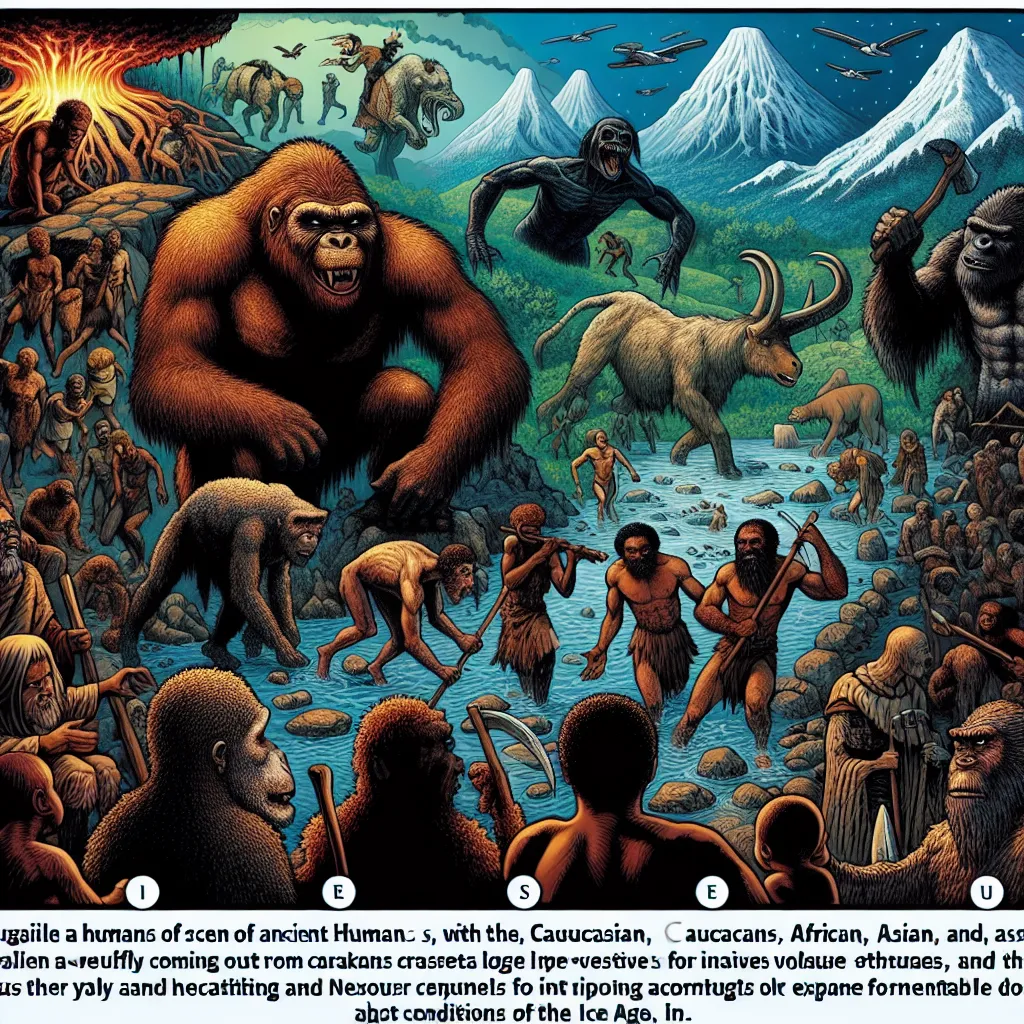What if someone told you that an animal can press rewind on its aging process and start over as if by magic? Or that a bird could soar higher than the world’s tallest mountains, breathing where humans would drop unconscious for lack of oxygen? Science, for all its precise measurements and firm conclusions, still encounters life forms that seem to scoff at the rules. As I thought through the strangest living mysteries, I couldn’t help but ask: How do these biological feats fit with what we know about the world?
Are we missing a rulebook written by evolution, or are there pages missing from the ones we have? The following eight cases push the edge of biology, where familiar certainties break down and wild unknowns take charge. Sometimes, the more you learn, the more questions you’re left with—maybe that’s what makes these stories stick.
Let’s begin with an organism straight out of science fiction. The immortal jellyfish, Turritopsis dohrnii, refuses to die of old age. Unlike us, it doesn’t march toward inevitable senescence. Instead, when faced with stress or injury, this jellyfish transforms its mature cells back into their juvenile form, essentially starting its life cycle anew. Imagine hitting “reset” on your own body every time you felt under the weather. How does it pull this off? We only have fragments of the answer. The jellyfish’s ability to reprogram its own cells breaks our understanding of aging. Some researchers dream of translating its genetic switches into human medicine, but for now, the species stays in its own realm—challenging our notions of what “immortal” might really mean.
“Biology gives you a brain. Life turns it into a mind.”
—I love that Oliver Sacks quote, because it reminds us that not everything biological is straightforward, or even logical.
Another case: the bar-headed goose. Each year, these birds migrate over the Himalayas, flying at heights exceeding 28,000 feet. The air up there is thin—so thin that most creatures, including people, would be unconscious in minutes. Yet, these geese keep going, as if the low oxygen isn’t a problem. Their blood binds oxygen tightly, their muscles use what little they get with astonishing efficiency, and their lungs are built to pull every scrap of oxygen from each breath. Still, the exact way they work at such heights, often in subzero temperatures and with howling winds, remains only partly explained. We’re left to wonder: How could a bird’s body bend the limits of what’s possible for warm-blooded life?
Ever heard of a tardigrade? These creatures—often called water bears—are nearly invisible to the naked eye. But their claim to fame is far from small. Tardigrades survive intense radiation, extreme dehydration, freezing and boiling temperatures, and even the vacuum of space. Scientists have fired them out of space capsules, only to have them rehydrate and come alive later. How is it possible? Tardigrades enter a cryptobiotic state: they dry up, suspend metabolism, and effectively “pause” their lives for decades. The molecular tricks they employ for this are still being unraveled. If life can bounce back from exposure to space, where else could it survive?
The platypus, a favorite oddball, is a mammal that lays eggs, produces venom, and senses electrical fields underwater. Nature, it seems, was unwilling to put the platypus neatly in any one box. Most remarkable is its sixth sense—electroreception. With its rubbery bill, the platypus detects muscle contractions of prey hiding in muddy riverbeds. No other mammal does this. Not only is the platypus venomous—one of the few mammals with this trait—but its venom is chemically unique, unlike anything found in snakes. Each of these peculiarities hints at evolutionary experiments we can’t fully reconstruct. Why do platypuses have these features? The fossil record and living DNA offer only clues, not answers.
“What strange phenomena we find in a great city, all we need do is stroll about with our eyes open. Life swarms with innocent monsters.”
—André Gide’s words echo loudly when you think about the platypus.
Consider the archaea that call the Mariana Trench home. Travel seven miles down, and the crushing pressure would flatten most things; the superheated vents would cook the rest. Yet these microscopic organisms not only live but thrive in what should be an utterly inhospitable world. Their cell membranes, proteins, and DNA must have properties we still can’t fully imitate in a lab. These archaea are not only tolerant of extreme pressure, but some even extract energy from chemicals spewing out of deep-sea vents—substances toxic to almost every other life form. What keeps their molecular machinery from falling apart under such stress? It’s a field open for new discoveries.
Let’s talk about making light from darkness. Bioluminescent organisms—from deep-sea fish to forest fungi—produce light so efficiently that almost no energy goes to waste as heat. LEDs and bulbs can’t come close. Some jellyfish and fireflies manufacture chemical reactions that dance at the edge of the possible, converting chemical energy into photons at near-perfect efficiency. We’ve mapped the primary players (luciferins and luciferases), but many mechanisms remain a riddle, particularly in species that glow with shifting colors or patterns. Why did such a perfect system evolve? Could we someday mimic these natural lights for our own use, with the same efficiency?
And then, the monarch butterfly. These delicate creatures migrate thousands of miles across North America, returning each year to the same groves in Mexico, even though no single butterfly lives long enough to make the trip both ways. It takes several generations to complete a roundtrip journey. How do they do it? The sun is only part of the equation; monarchs seem to respond to faint magnetic fields, temperature gradients, and chemical cues we don’t fully understand. With each migration, we’re reminded that epic navigation doesn’t require a map or a GPS, just instincts and tools completely foreign to us.
“Nature is not only stranger than we suppose, it is stranger than we can suppose.”
—J.B.S. Haldane’s perspective is hard to argue with when you observe these animals.
Lastly, picture the axolotl: a salamander from Mexican lakes, famous for its ability to regrow not just limbs, but spinal cords, eyes, and parts of its heart and brain. Most animals can heal, but the axolotl replaces whole complex tissues without scarring. The cells at the wound site revert to a kind of embryonic state—then they rebuild the missing parts in perfect order. If we could tap into even a fraction of this ability, human medicine would be utterly transformed. Yet, translating regeneration from an axolotl to humans is a puzzle far from solved. Why does this animal retain such powers, while close relatives do not?
Would you agree these cases hint at rules and possibilities that, so far, have escaped us? Each story pushes me to ask more questions. Why do some forms of life seem to find loopholes in nature’s laws? What drives such extremes—accident, necessity, or something stranger?
I’m struck by how often, in biology, the exception outshines the rule. Each example above is a reminder: life isn’t bound by what we expect. As much as we piece together, there is always something wild and new around the corner. It’s a humbling, even thrilling lesson—one that fuels every new investigation, and every quiet moment of awe in the face of the living world.
The next time you hear someone say, “That’s impossible,” you might ask: Is it really? Or have we simply not met the creature who does it already?





